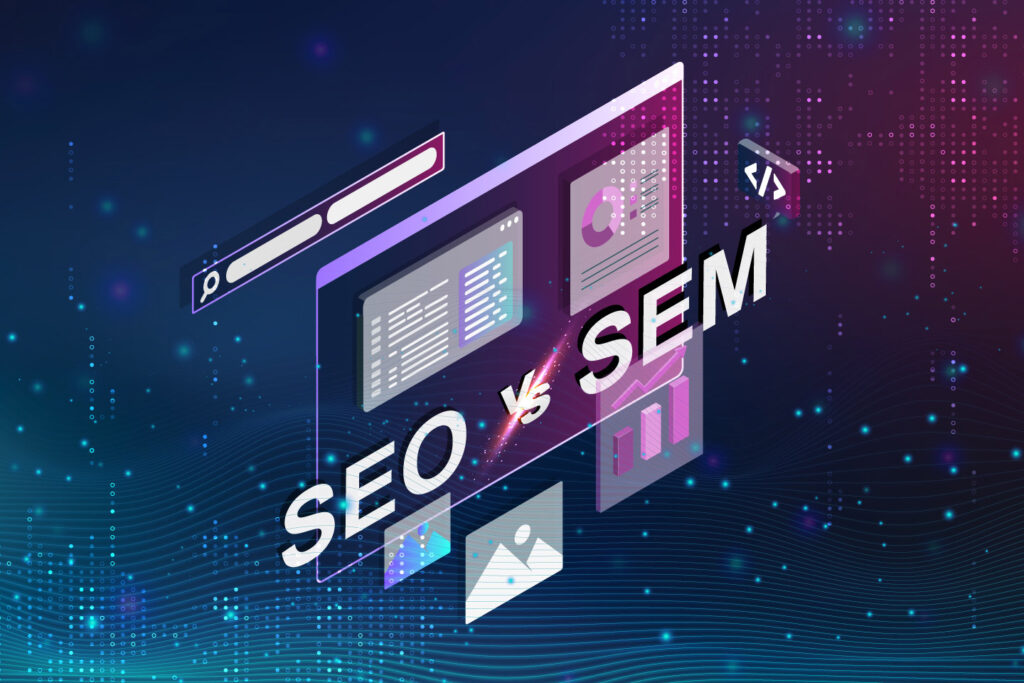
In the digital age, where online visibility is paramount, Search Engine Marketing (SEM) has emerged as a vital strategy for businesses to increase their visibility, drive targeted traffic, and achieve their marketing objectives. SEM encompasses various techniques to promote websites by increasing their visibility in search engine results pages (SERPs) through paid advertising. Let’s delve into the essentials of SEM and how it can propel your business forward.
- Understanding SEM: At its core, SEM involves leveraging paid advertising to promote websites on search engine results pages (SERPs). Unlike Search Engine Optimization (SEO), which focuses on optimizing organic search results, SEM relies on paid advertising models such as pay-per-click (PPC) to drive immediate traffic to websites. Popular SEM platforms include Google Ads (formerly Google AdWords) and Bing Ads.
- Keyword Research and Selection: Keywords are the foundation of SEM campaigns. Conduct thorough keyword research to identify relevant terms and phrases that potential customers are using to search for products or services in your industry. Use keyword research tools like Google Keyword Planner, SEMrush, or Ahrefs to discover high-volume, low-competition keywords relevant to your business.
- Campaign Structure and Organization: Structure your SEM campaigns in a logical and organized manner to maximize their effectiveness. Divide your campaigns into ad groups based on related keywords or themes, allowing for targeted ad messaging and better control over budget allocation. Ensure each ad group is tightly focused on a specific product, service, or aspect of your business.
- Compelling Ad Copy: Craft compelling ad copy that entices users to click on your ads. Write clear, concise, and persuasive ad headlines and descriptions that highlight the unique selling points of your products or services. Incorporate relevant keywords into your ad copy to improve ad relevance and quality score, which can positively impact your ad’s placement and cost-per-click (CPC).
- Ad Extensions: Take advantage of ad extensions to enhance the visibility and appeal of your ads. Ad extensions allow you to include additional information such as site links, callouts, location information, and structured snippets directly within your ads. Utilizing ad extensions not only provides more value to users but also increases your ad’s visibility and click-through rate (CTR).
- Bid Management and Optimization: Effective bid management is essential for maximizing the performance of your SEM campaigns. Monitor your campaign’s performance closely and adjust bids based on factors such as keyword performance, competition, and return on investment (ROI). Experiment with different bidding strategies, such as manual bidding, automated bidding, or bid adjustments, to achieve your desired campaign objectives.
- Targeting Options: SEM platforms offer various targeting options to reach specific audiences and demographics. Utilize targeting options such as location targeting, device targeting, language targeting, and audience targeting to tailor your ads to the most relevant audience segments. By targeting your ads effectively, you can improve ad relevance and increase the likelihood of conversions.
- Conversion Tracking and Optimization: Implement conversion tracking to measure the effectiveness of your SEM campaigns in driving desired actions, such as purchases, sign-ups, or inquiries. Track key metrics such as conversion rate, cost-per-acquisition (CPA), and return on ad spend (ROAS) to evaluate campaign performance and identify areas for optimization. Optimize your campaigns based on conversion data to improve ROI and maximize results.
- A/B Testing: Experiment with different ad creatives, messaging, and landing pages through A/B testing to identify the most effective combinations. Test elements such as ad headlines, call-to-action (CTA) buttons, imagery, and offers to determine which variations resonate best with your target audience. Continuously optimize your ads based on A/B test results to improve performance over time.
- Continuous Monitoring and Optimization: SEM is an ongoing process that requires continuous monitoring and optimization to stay competitive. Regularly analyze your campaign performance metrics and adjust your strategies accordingly. Stay updated on industry trends, algorithm changes, and competitor activity to adapt your SEM approach and maintain a competitive edge.
In conclusion, Search Engine Marketing (SEM) is a powerful tool for businesses to increase their online visibility, drive targeted traffic, and achieve their marketing objectives. By understanding the fundamentals of SEM and implementing effective strategies, businesses can reach their target audience, generate leads, and drive conversions in the competitive landscape of online advertising.